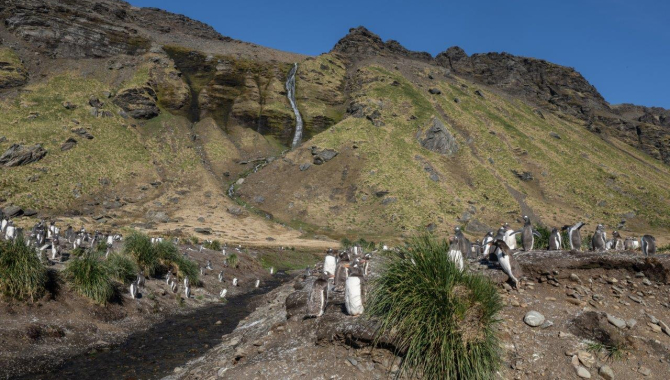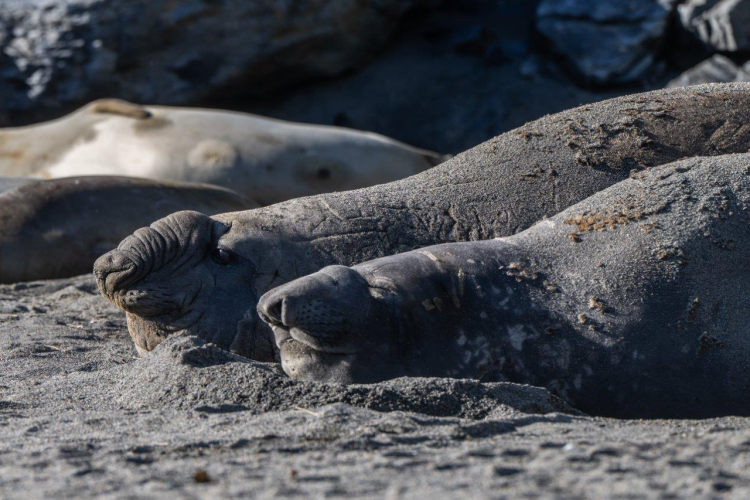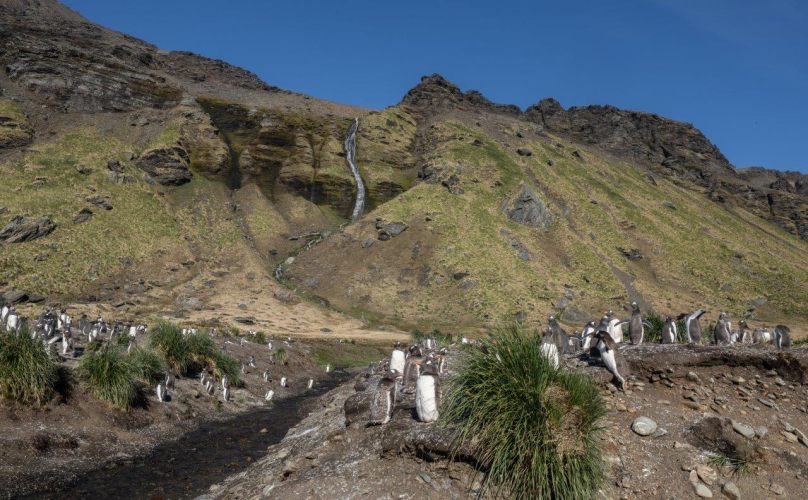Royal Bay, Moltke harbour

The year 1775. Captain Cook keeps exploring and charting the northern coast of South Georgia, still with the hope that he is on the mythical southern continent. Before he could know that a few miles ahead he was about to round the southern cape of the island and confirm its insular character, he sails into a wide inlet, surrounded by high mountains and several glaciers, nowadays the main ones named Weddell and Ross.
Royal Bay was again charted in 1882 during the First International Polar Year (IPY). And surprisingly there’s not much more regarding the mapping and charting this area. Although a copy of the 1882 charts together with the general chart of the whole of the island are enough for Europa to enter the bay and find a couple of relatively good anchorages.
Schrader lead the German team of the International Polar Year Investigations set out here to observe the transit of Venus, now again about 100 years after Cook tried it too from Tahiti on his first trip to the Pacific Ocean.
The group came in on the steam ship SMS Moltke which was the first powered vessel to reach South Georgia.
Moltke Harbour, a one-mile wide bay on the northwest side of Royal Bay and where we lay at anchor since last night, is named after it.
This first IPY 1882-83 was a large combined effort on polar research, it counted twelve participating nations: the Austro-Hungarian Empire, Denmark, Finland, France, Germany, Netherlands, Norway, Russia, Sweden, United Kingdom, Canada, and United States. They operated 12 stations in the Arctic and two in the sub-Antarctic. Six additional meteorological stations were organised on the east coast of Labrador.
Here at Moltke Harbour not much is left of the German scientific camp, but the landscape, the wildlife and the hiking possibilities are truly inviting for what may be our last landfall in South Georgia.
Ubiquitous Fur seals are spread all over the sandy beach, with a couple of calmer spots left as an entertainment swimming pool for the pups. But all the way at the southern corner, a group of large Male Elephant seals have started their moulting. Inland, not far away a Gentoo penguin rookery. Their home surrounded by green fields that lead up to steep cliffs and peaks. From one of them a picturesque waterfall flows over moss covered rocks, a place for a little rest, enjoy the freshness of the steam under today’s sunny skies and have a good look at the imposing landscape. Alpine scenery, framed by mountains and the sea. At the horizon a menacing rolling cloud approaching, sure announcing a weather change.

And indeed, as we reposition the ship a handful of miles further south, still inside Royal Bay, the wind picks up and the seas start growing. Nevertheless we agree on still trying an afternoon landing here. The anchor drops close to Brisbane Point where more than 30.000 King penguin pairs nest over the flat areas left behind by the retreat of Weddell Glacier. Easy levelled terrain is not the only feature that it left behind, but also a shallow barely submerged frontal moraine which lays on the way before we could reach shelter for disembarking. Swell breaks over it, sea spray is in the air, water splashes and fills the scout zodiac as she dips her bow between the steep short but high breaking waves over the moraine. Sadly the conditions are too heavy for continuing with our afternoon activity ashore. But still the ship is about to spend the afternoon and until tomorrow early morning at this anchorage before definitively leave from South Georgia and head towards Tristan da Cunha.
We spent over week on the island, and we learned that a successful trip in South Georgia is all about timing, some gamble on the possibilities and weather, a lot of adjusting schedules and put in practice the experience and previous knowledge of the island’s characteristics.
One has to time activities between passing Low Pressure Systems, the boats must take the beat of the swell trains crashing at the beach, the jobs on board have to adjust and coordinate with the activities ashore to drop or pick us up from hostile yet beautiful lands.
Valuable too is the understanding and the background experience to interpret not just the clouds, winds, tides, swells, the landscape, but also the wildlife and its behaviour.
Nevertheless, often we have to place a wager on weather conditions, unpredictable gusts and sea states to try an always interesting and captivating landfall.
Regardless all of that, the island always have the last word, and better be ready and sharp to deal with unexpected circumstances.
South Georgia gives, South Georgia takes. The island welcomes you and also let you know when it’s time to leave.


